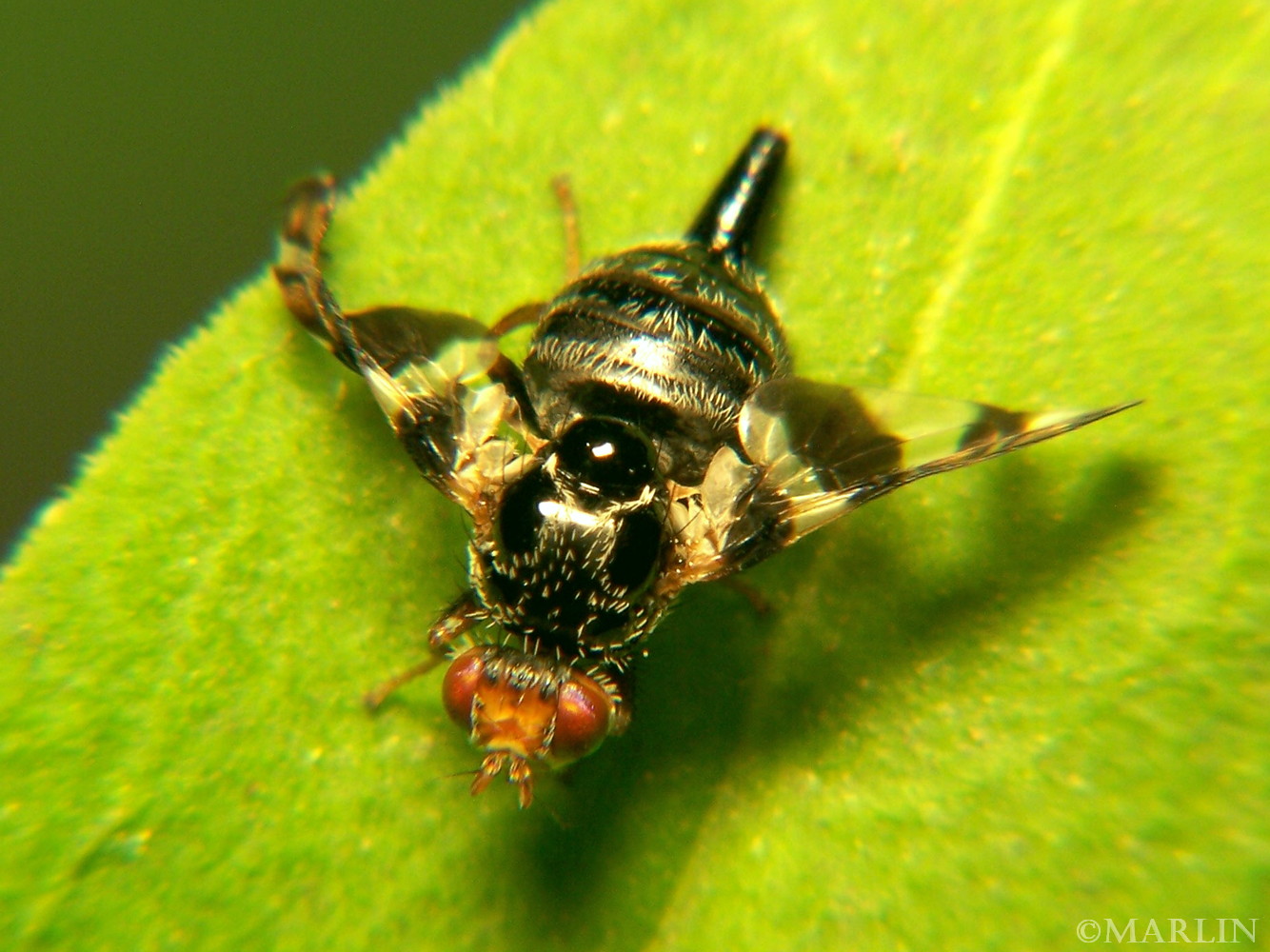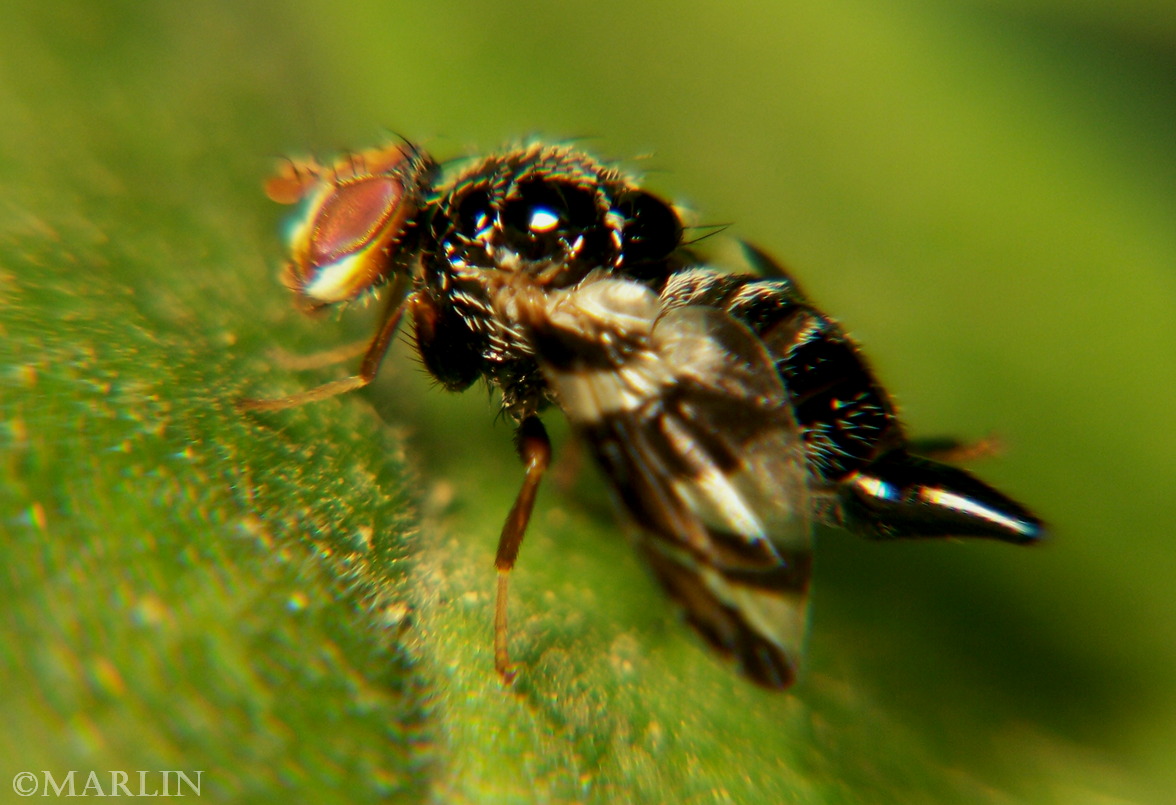Fruit Fly – Procecidochares atra
Family Tephritidae – Large Fruit Flies
Live adult female fruit fly photographed at DuPage County, Illinois. Size: 5mm
These pictures were taken way back in 2005, with an early Kodak point-and-shoot camera. It’s not very well known, but Kodak invented digital photography. They fielded some pretty nice point and shoot cameras back in the early days – but let the business languish in favor of its conviction people still wanted paper prints; hence it focused on printers and inks and other such archaic methods.
Tephritidae is one of two fly families referred to as “fruit flies.” Tephritidae does not include the biological model organisms of the genus Drosophila, which is often called the “common fruit fly”. Drosophila is, instead, the type genus of the second “fruit fly” family, Drosophilidae. There are nearly 5,000 described species of tephritid fruit fly, categorized in almost 500 genera. Description, recategorization, and genetic analysis are constantly changing the taxonomy of this family. To distinguish them from the Drosophilidae, the Tephritidae are sometimes called peacock flies.
Tephritid fruit flies are of major importance in agriculture. Some have negative effects, some positive. Various species of fruit fly cause damage to fruit and other plant crops. The genus Bactrocera is of worldwide notoriety for its destructive impact on agriculture. The olive fruit fly (B. oleae), for example, feeds on only one plant: the wild or commercially cultivated olive. It has the capacity to ruin 100% of an olive crop by damaging the fruit. On the other hand, some fruit flies are used as agents of biological control, thereby reducing the populations of pest species.
Their behavioral ecology is of great interest to biologists. Some fruit flies have extensive mating rituals or territorial displays. Many are brightly colored and visually showy. Some fruit flies show Batesian mimicry, bearing the colors and markings of dangerous insects such as wasps because it helps the fruit flies to avoid predators; the flies, of course, lack stingers.
You can see the fruit fly – Euaresta aequalis “kissing’ mating ritual HERE.
Insects & Spiders | Flies Index | Crane Flies | Flower Flies | Bee Flies | Robber Flies



